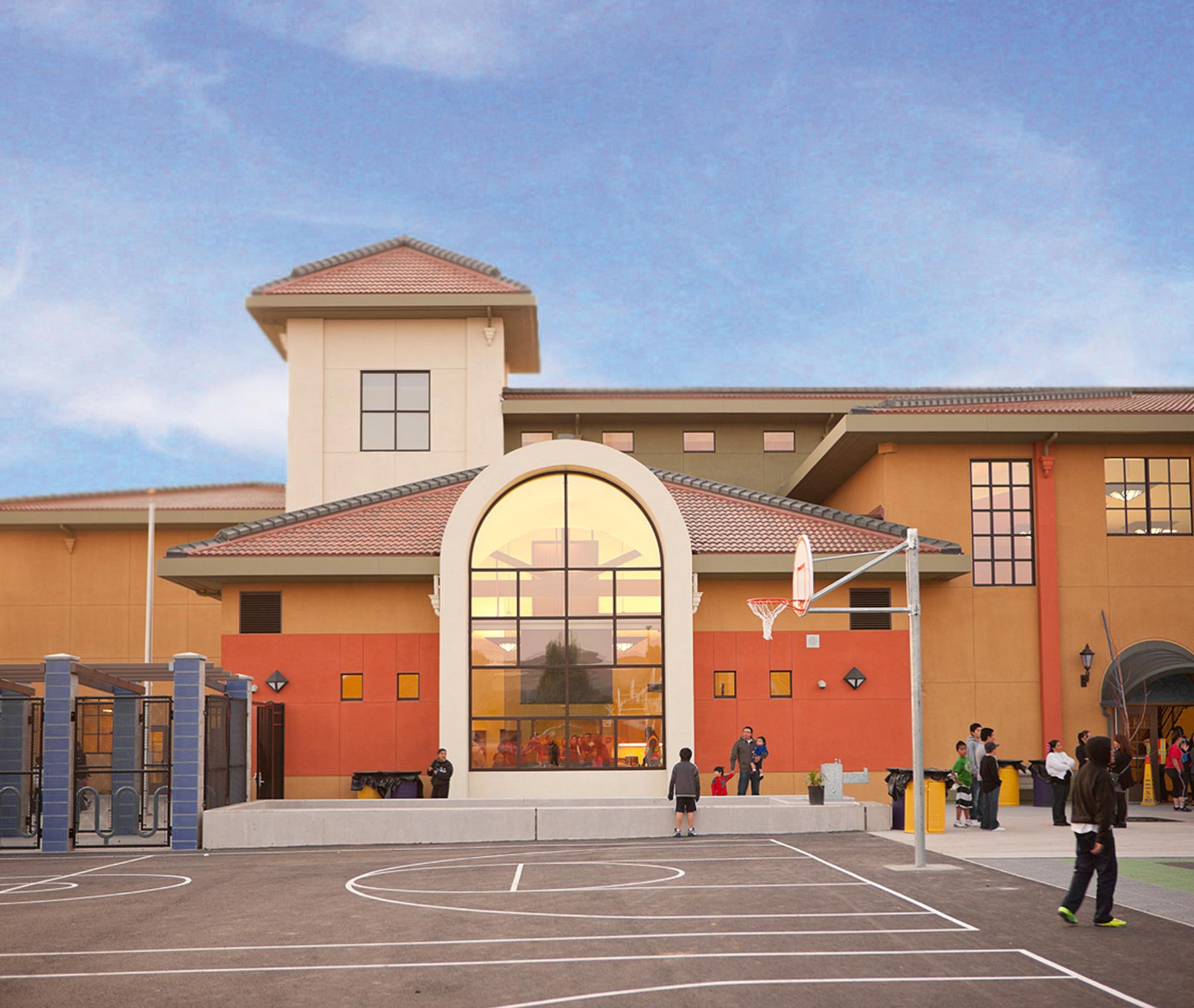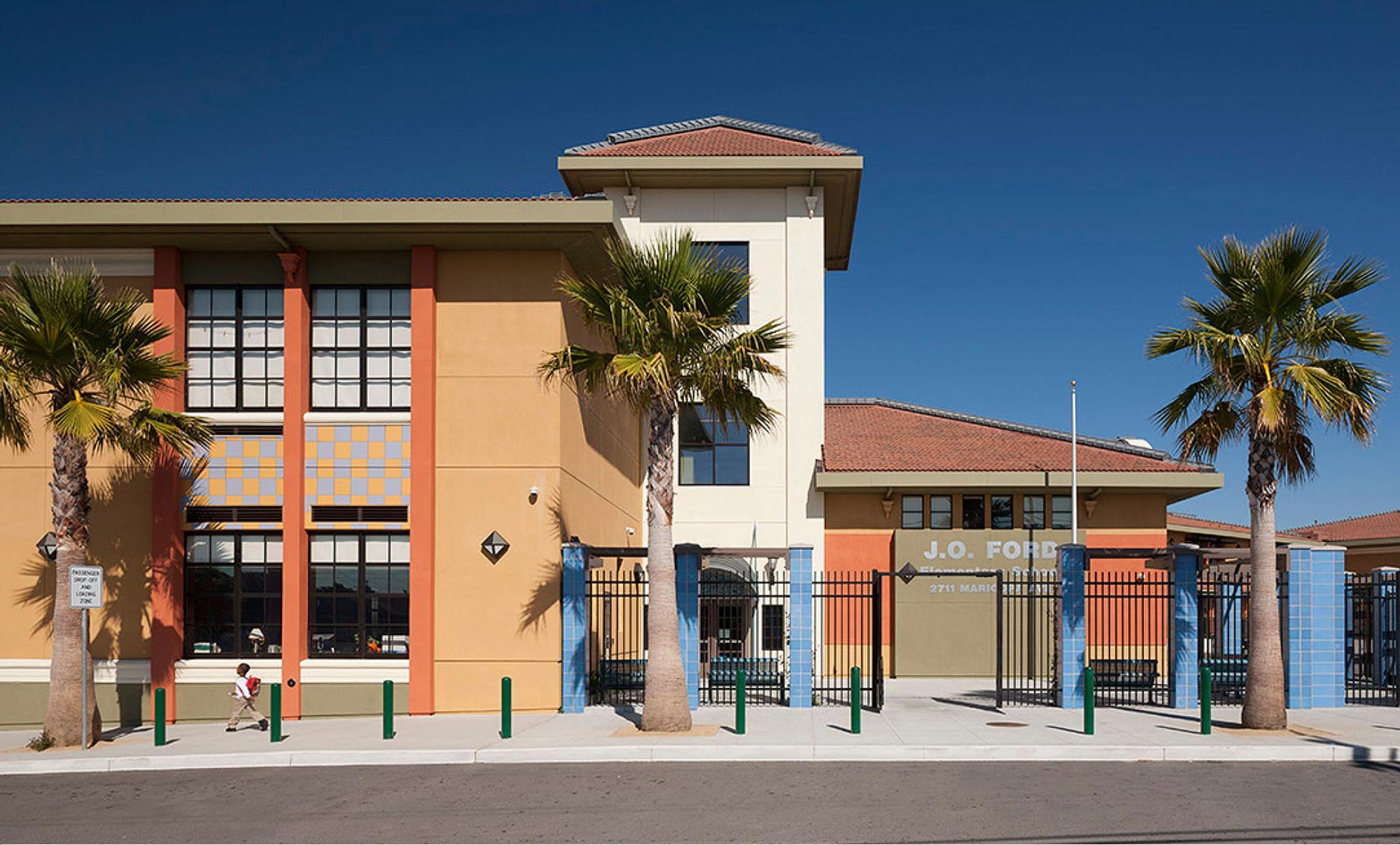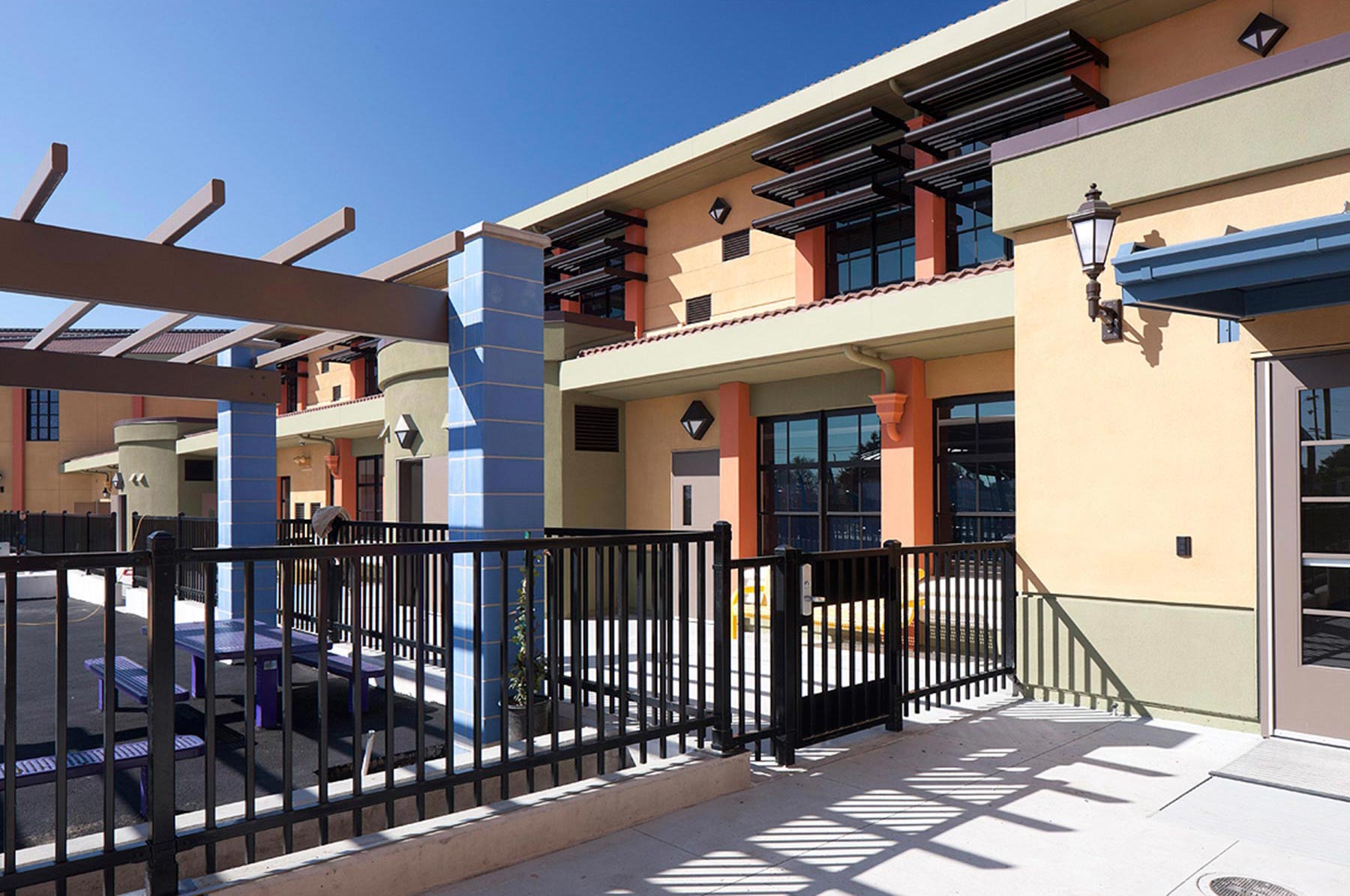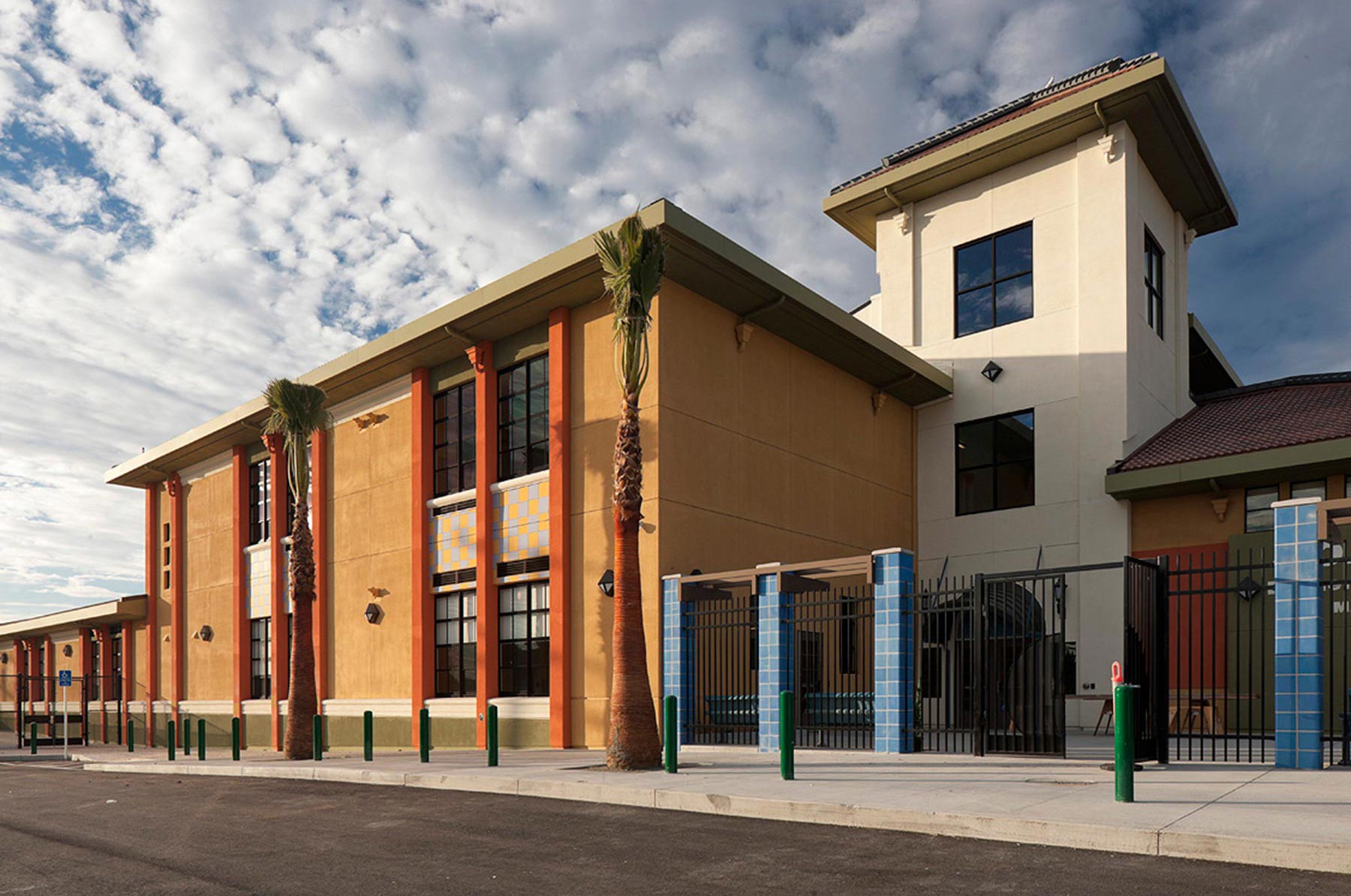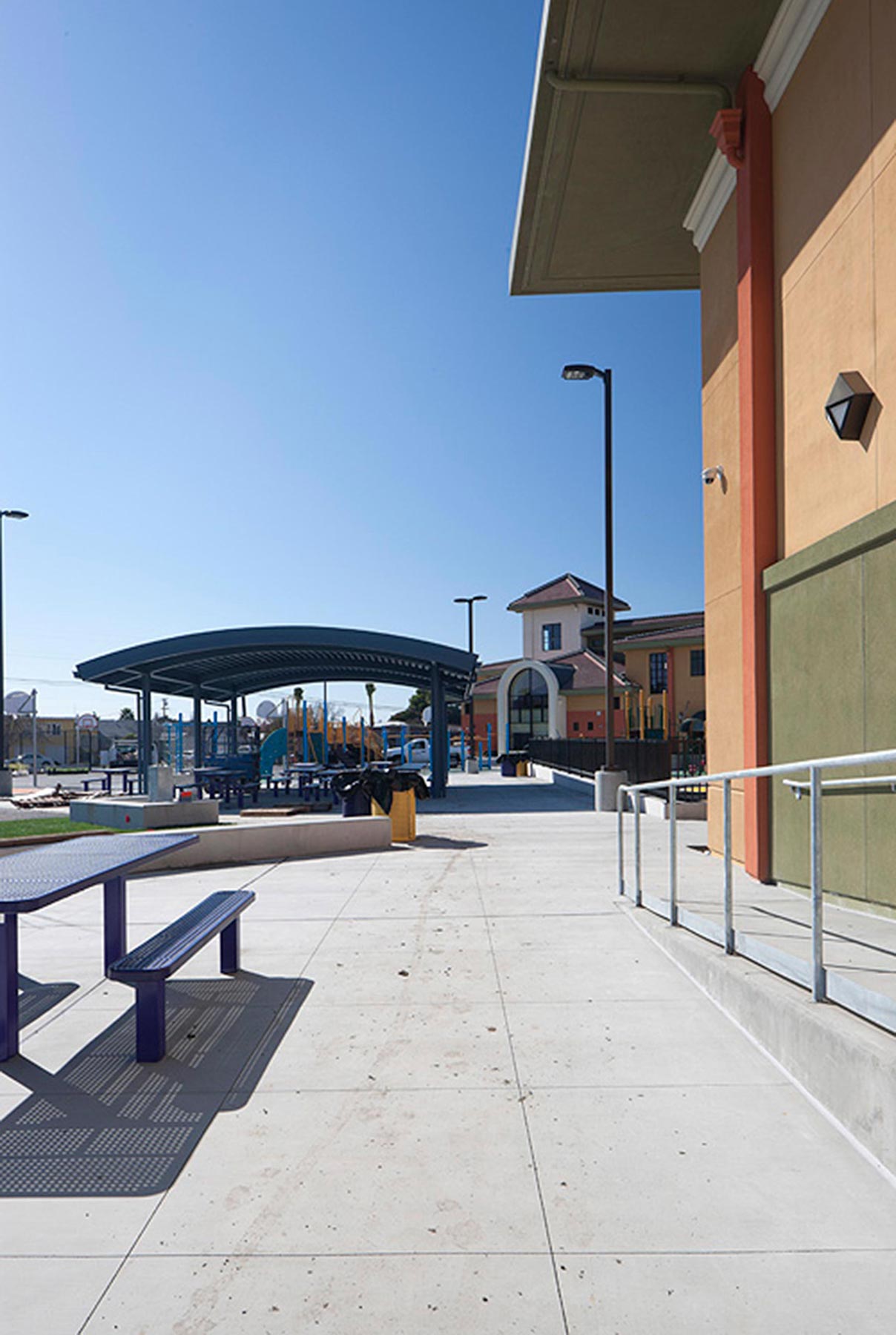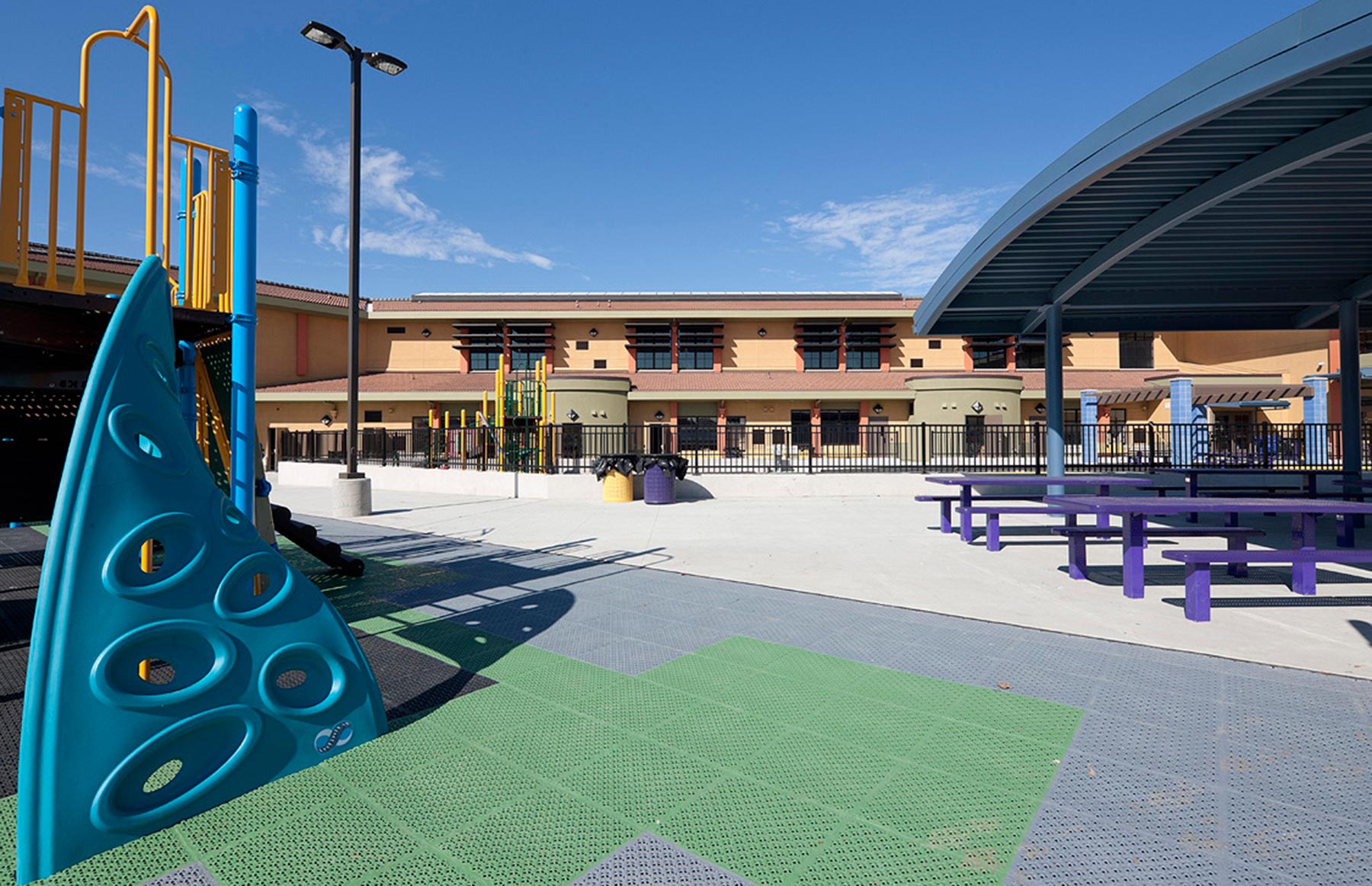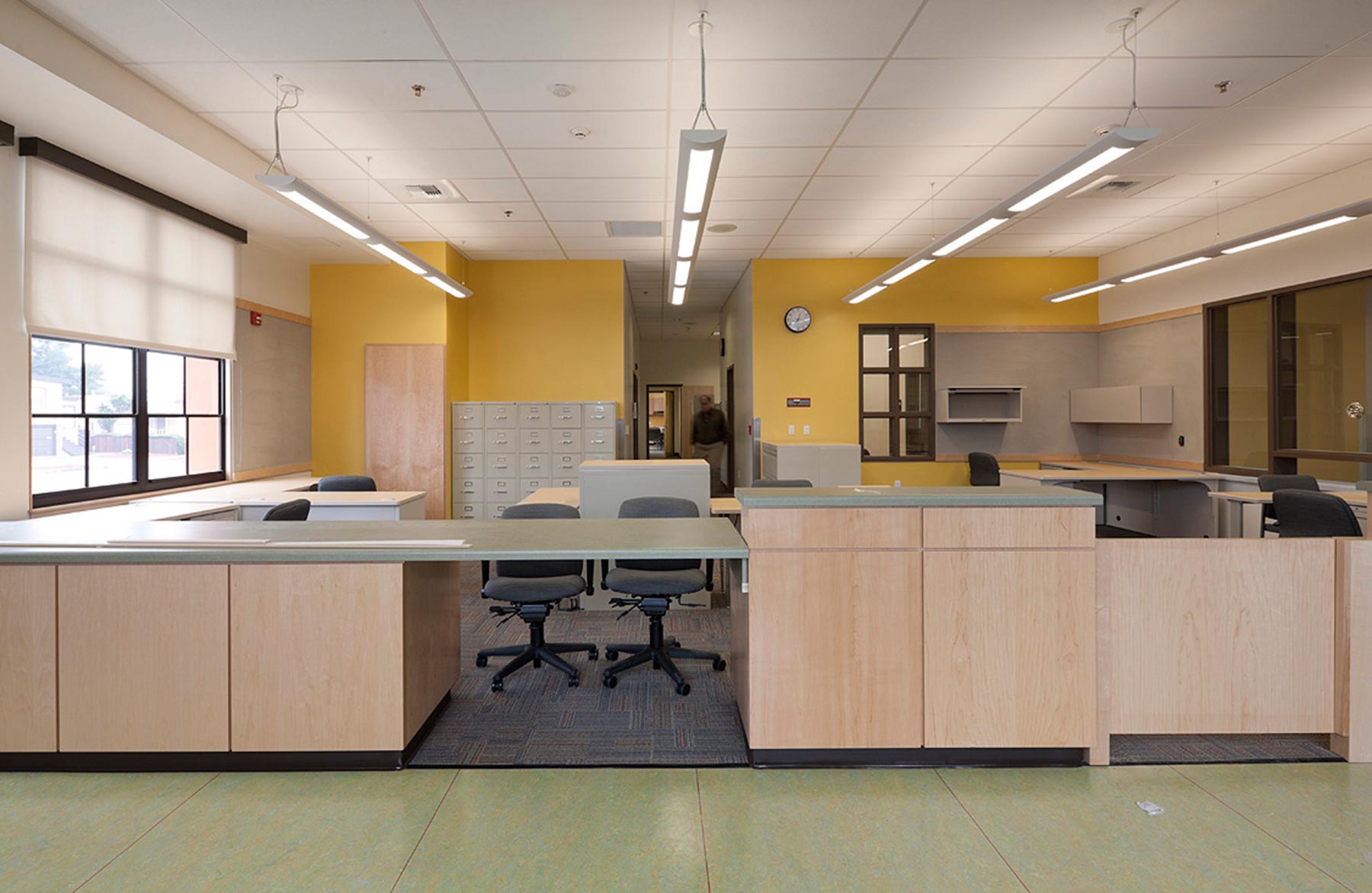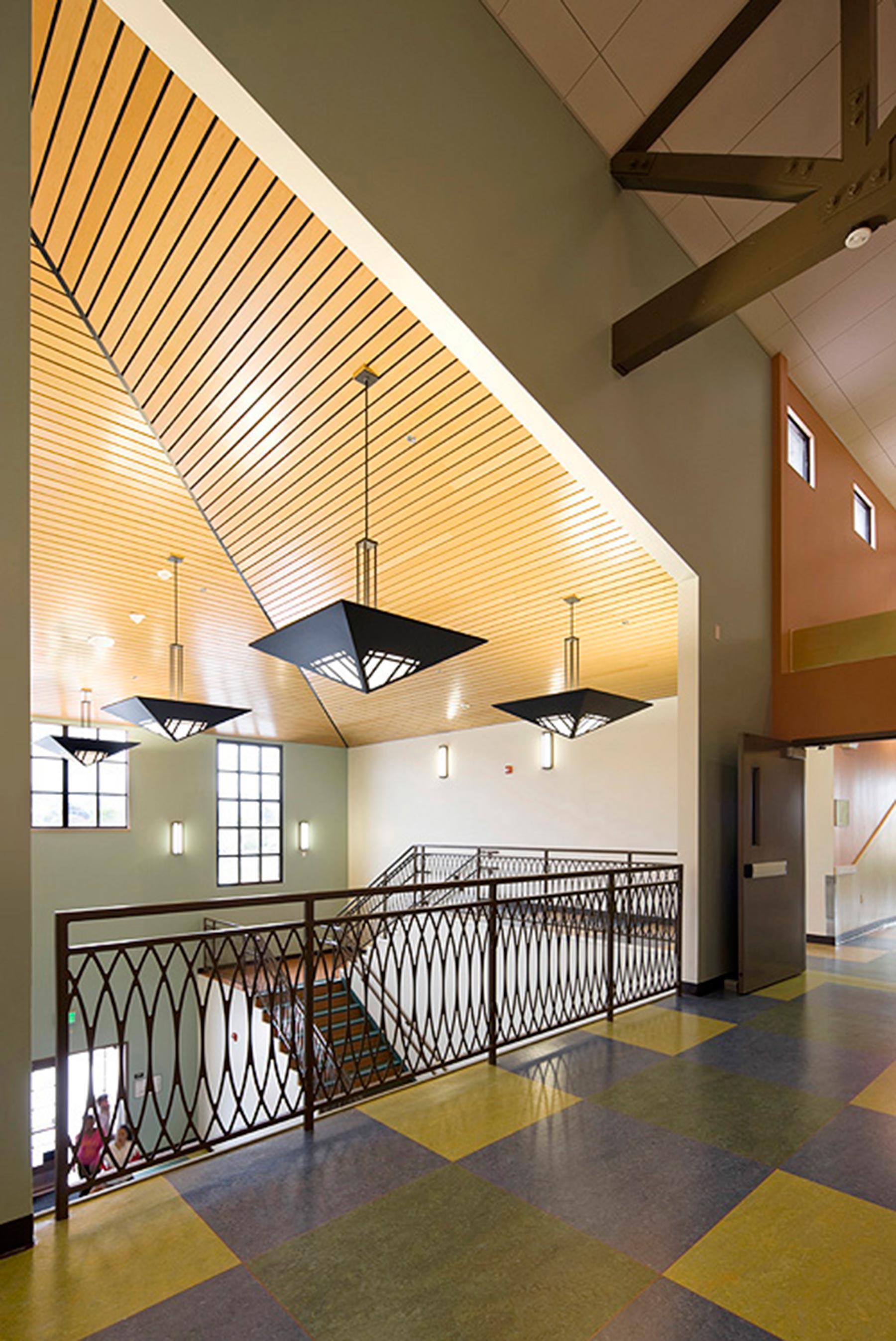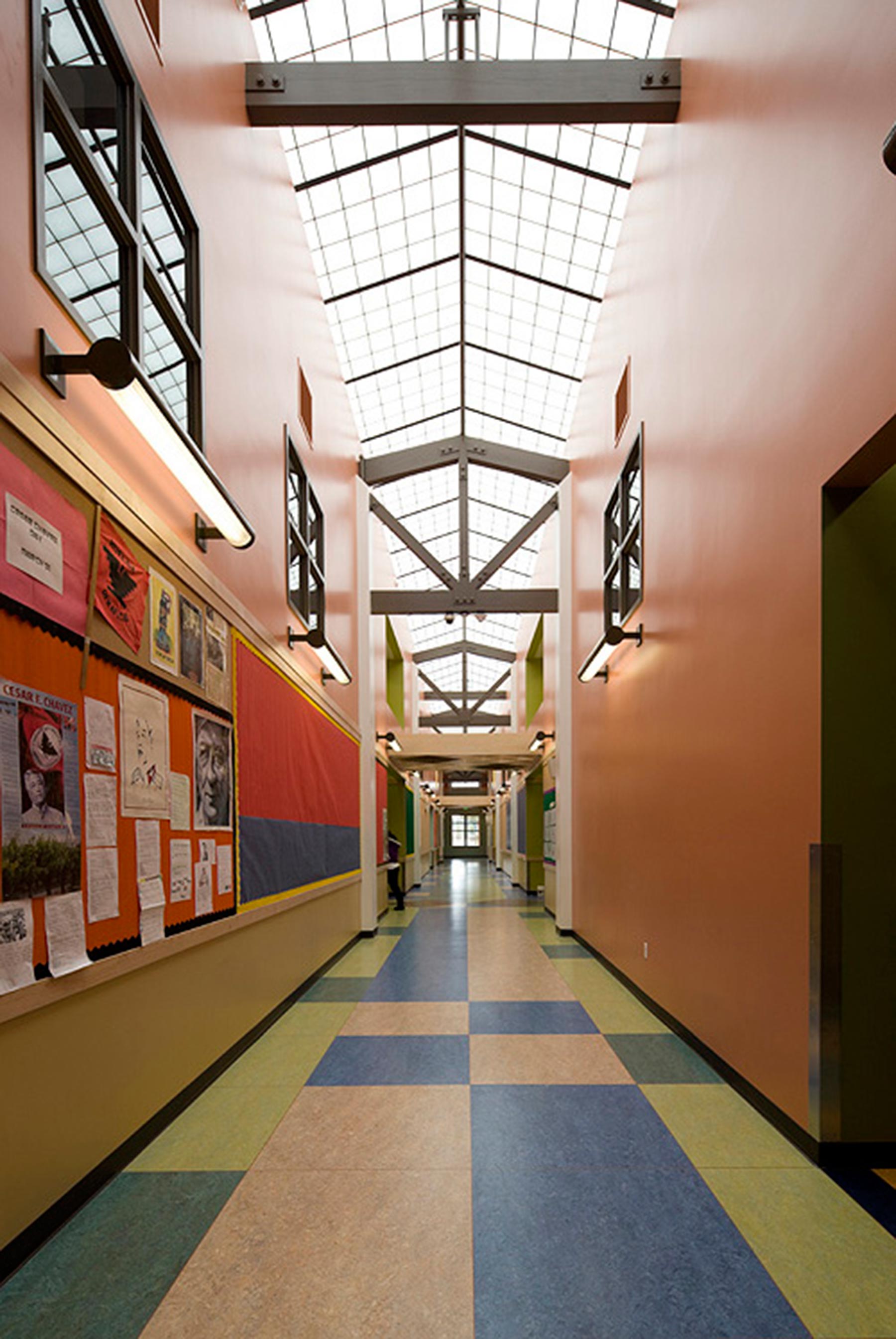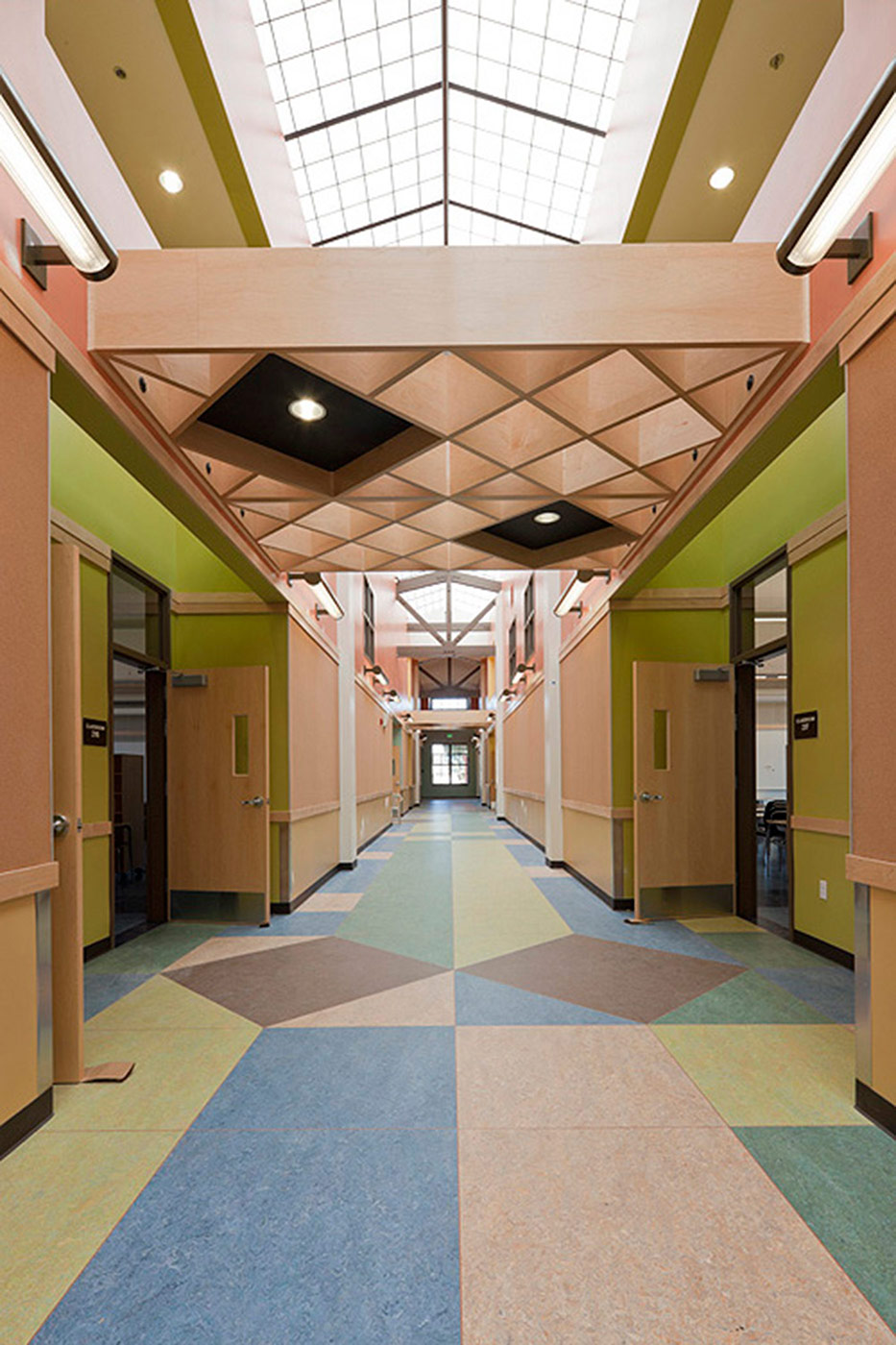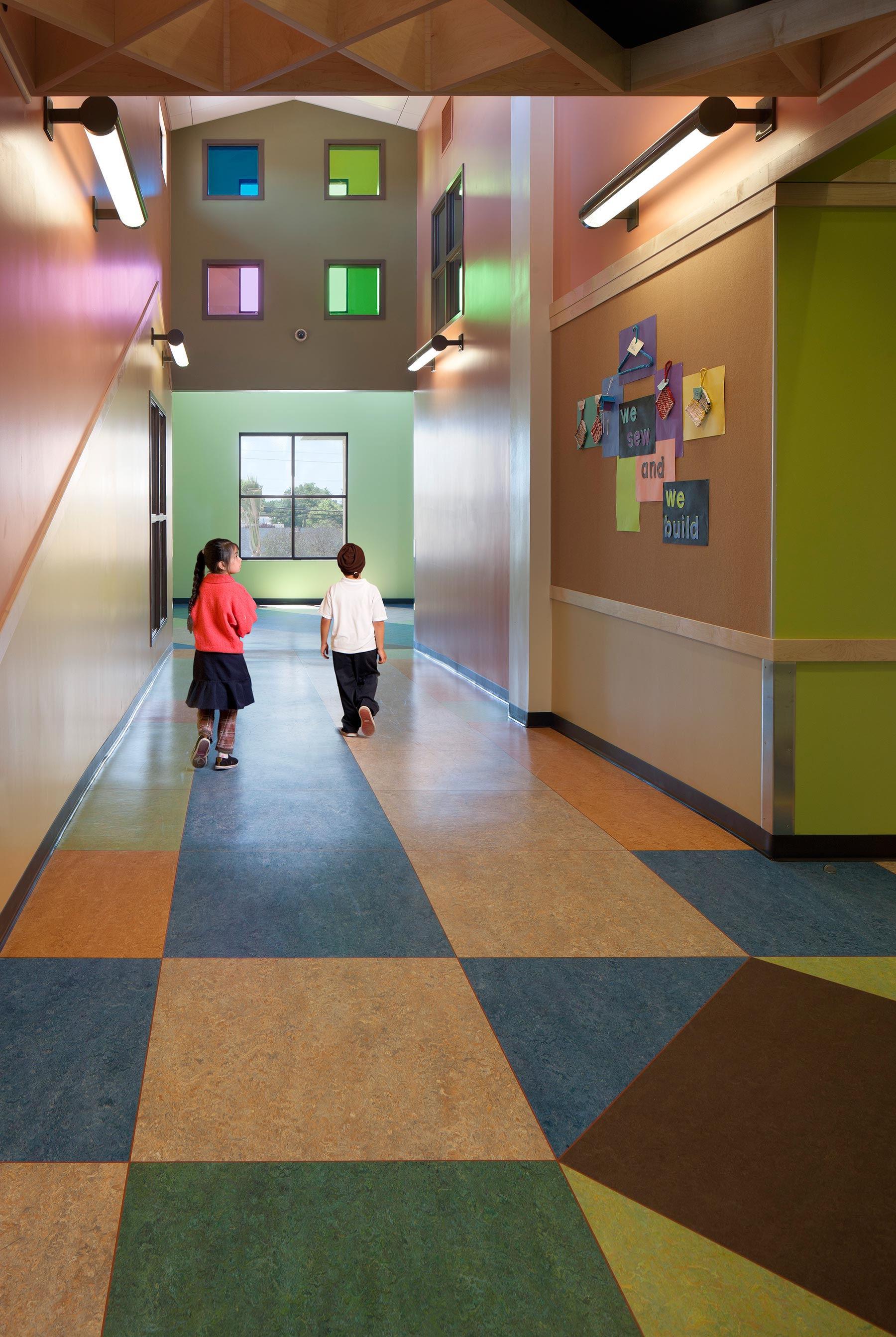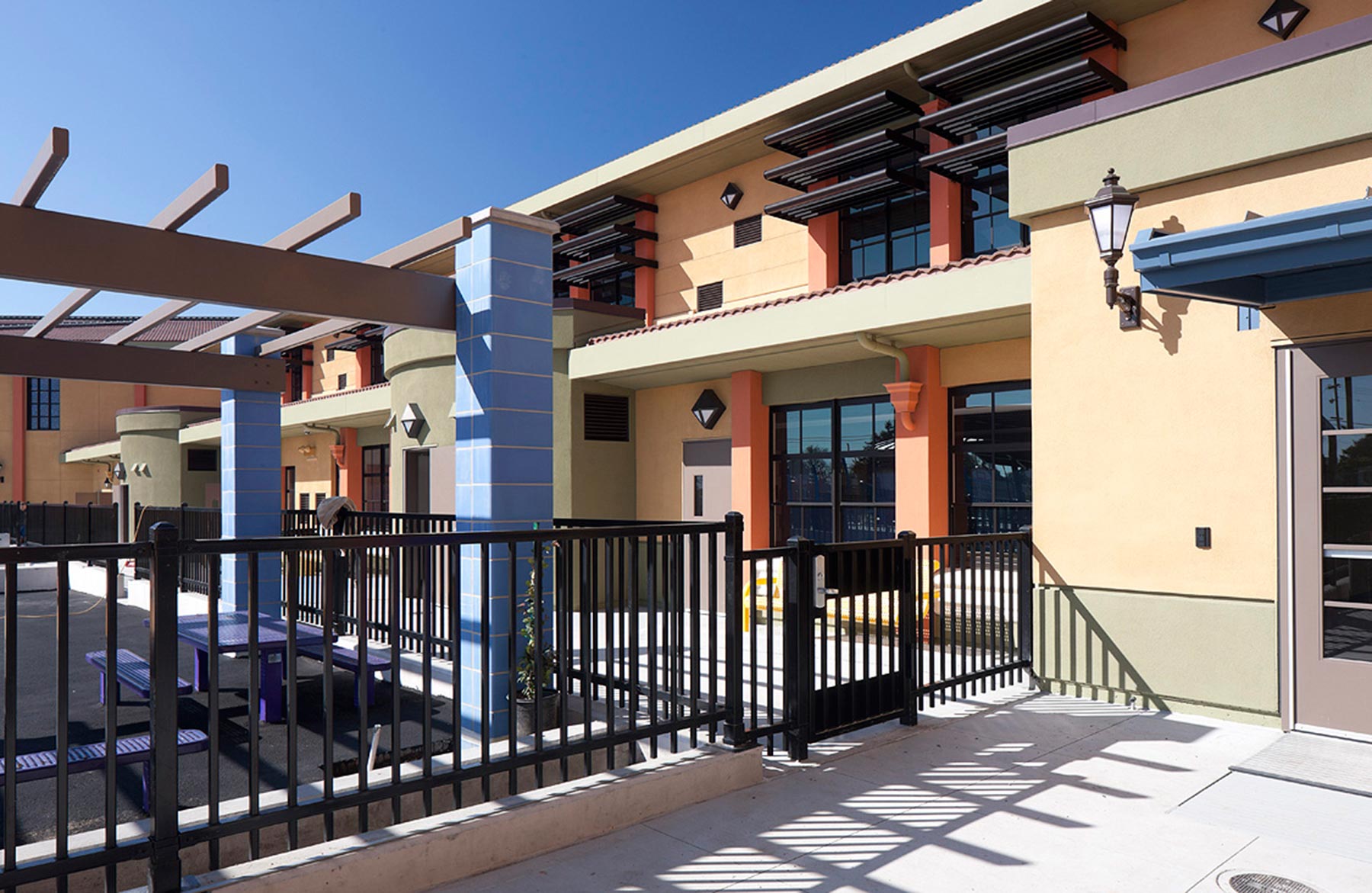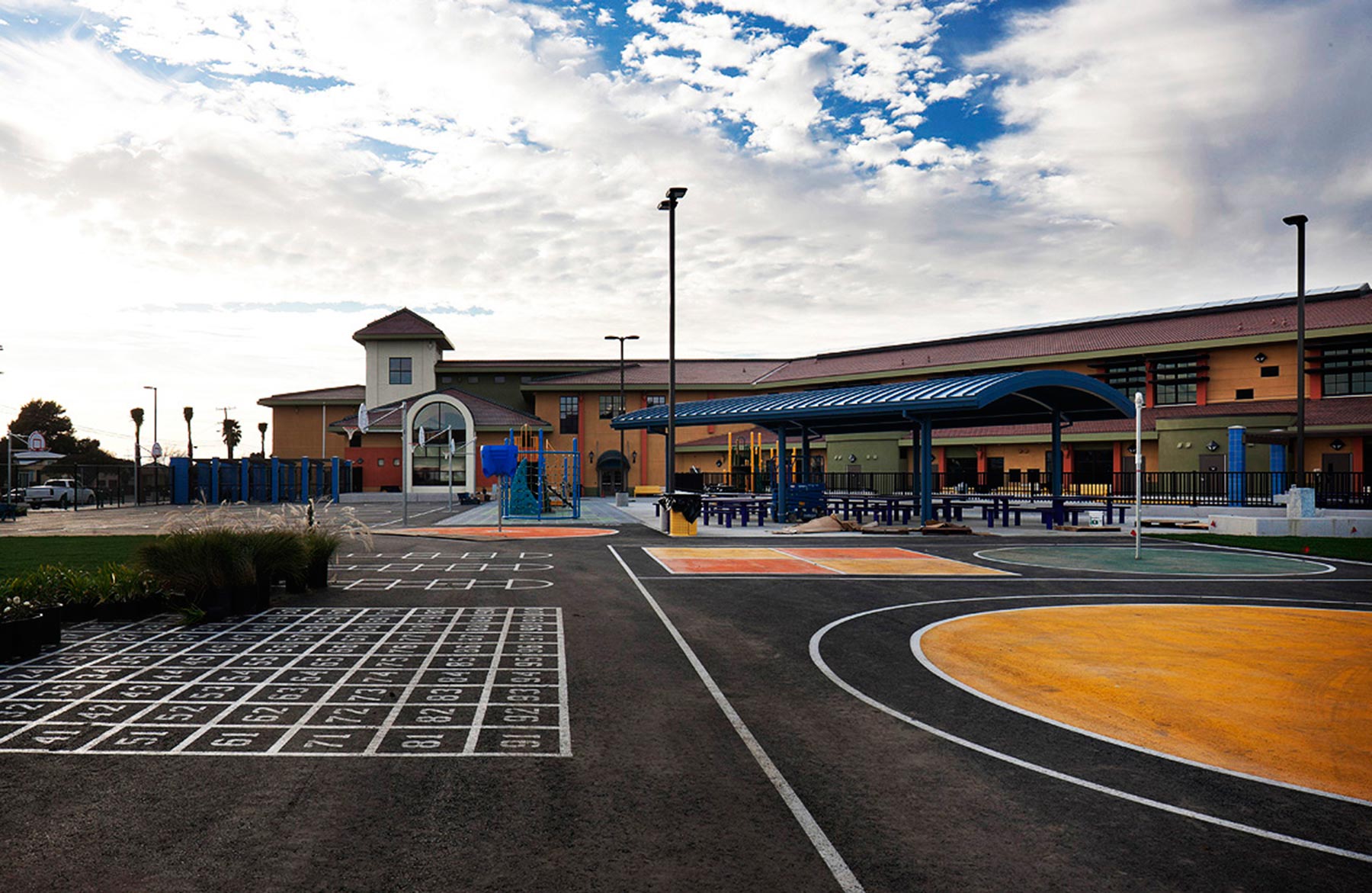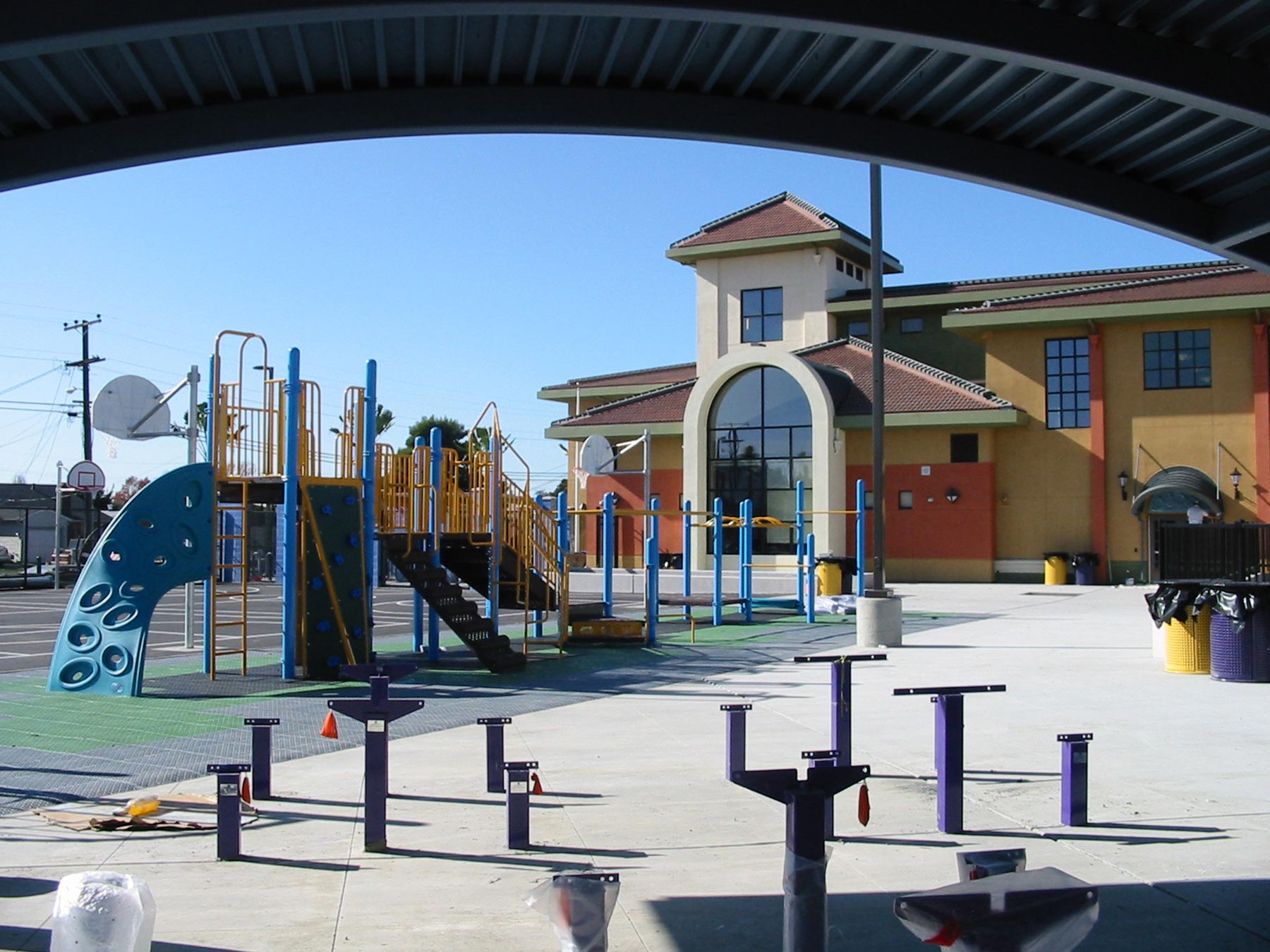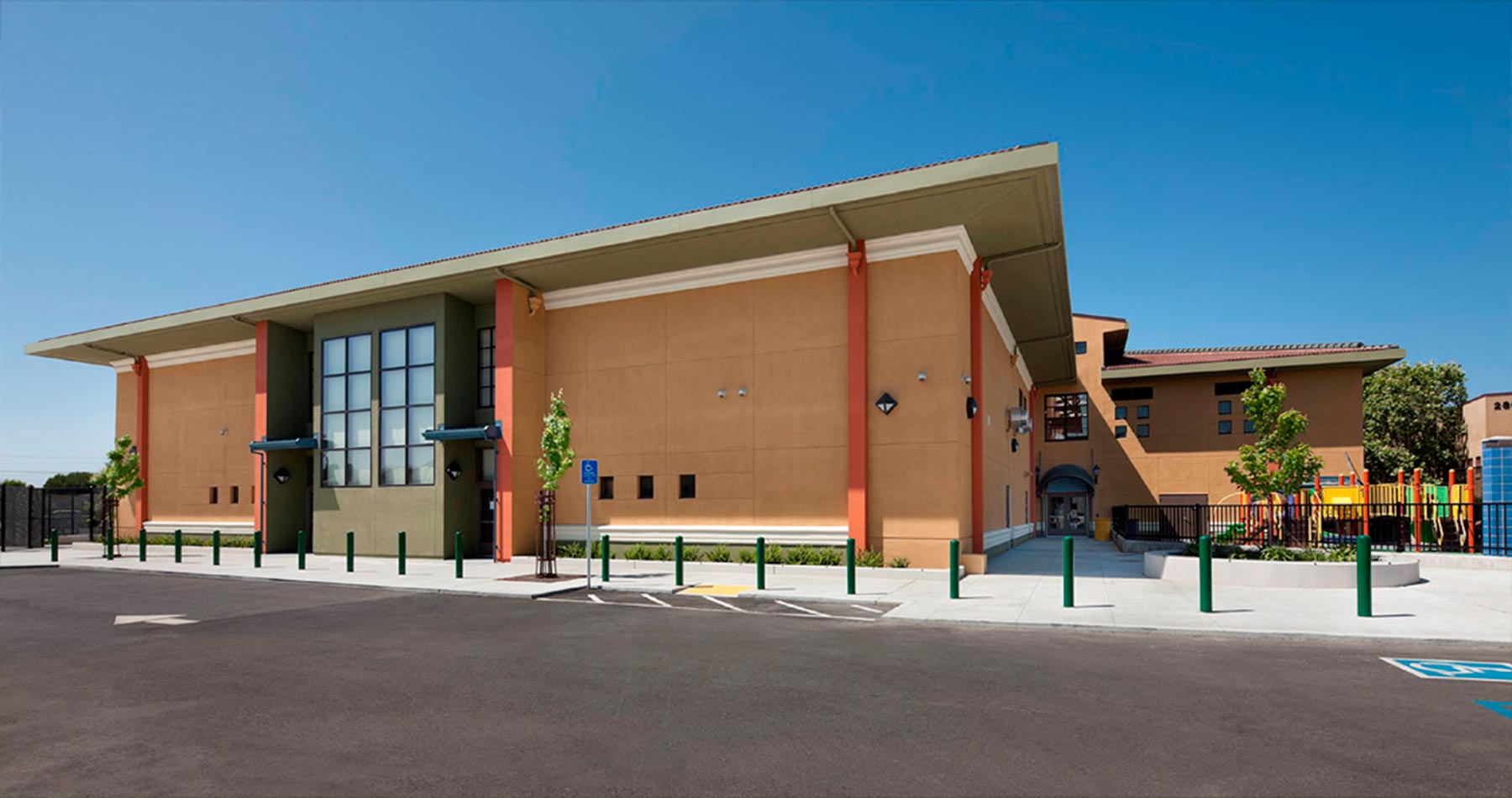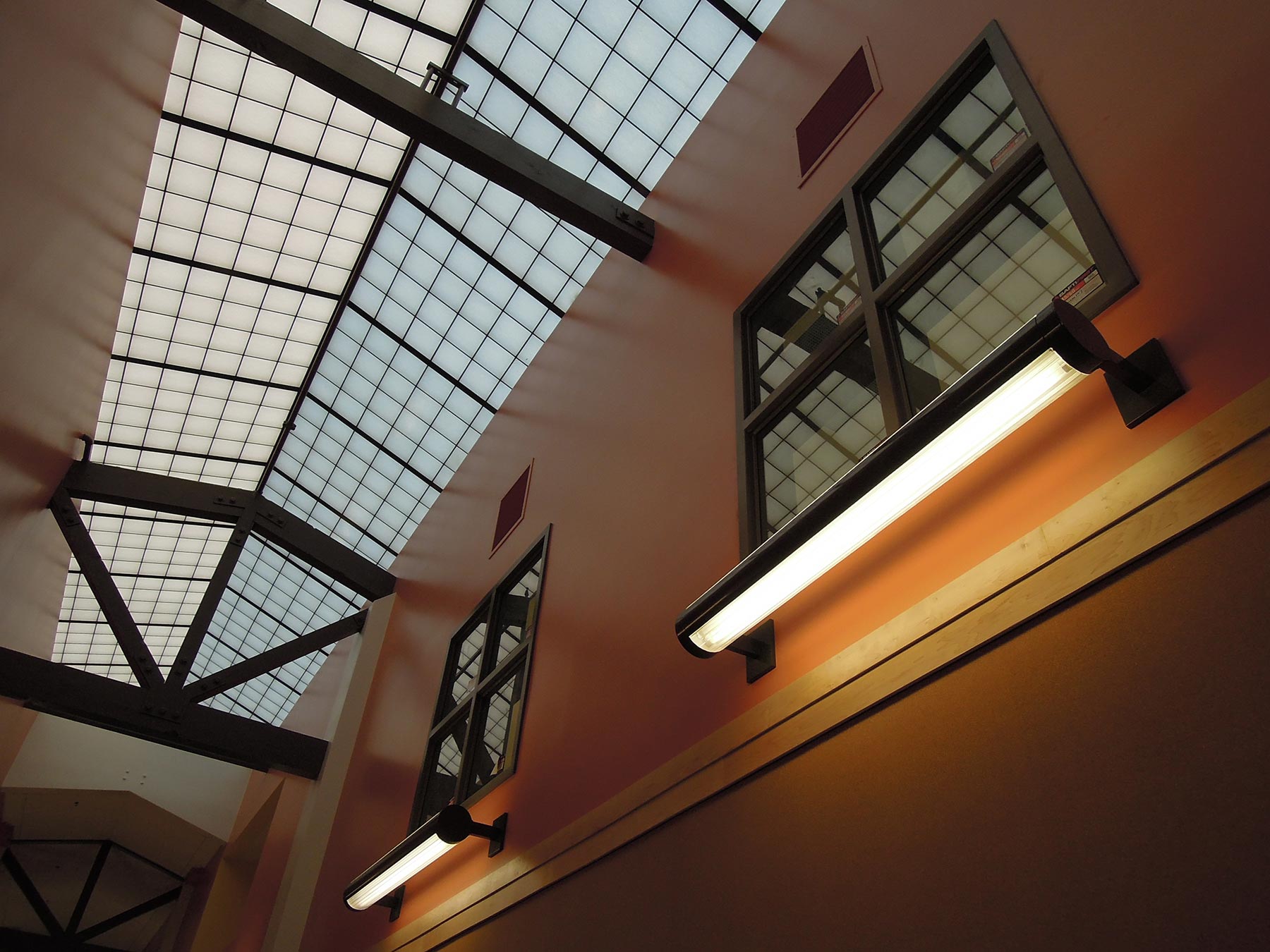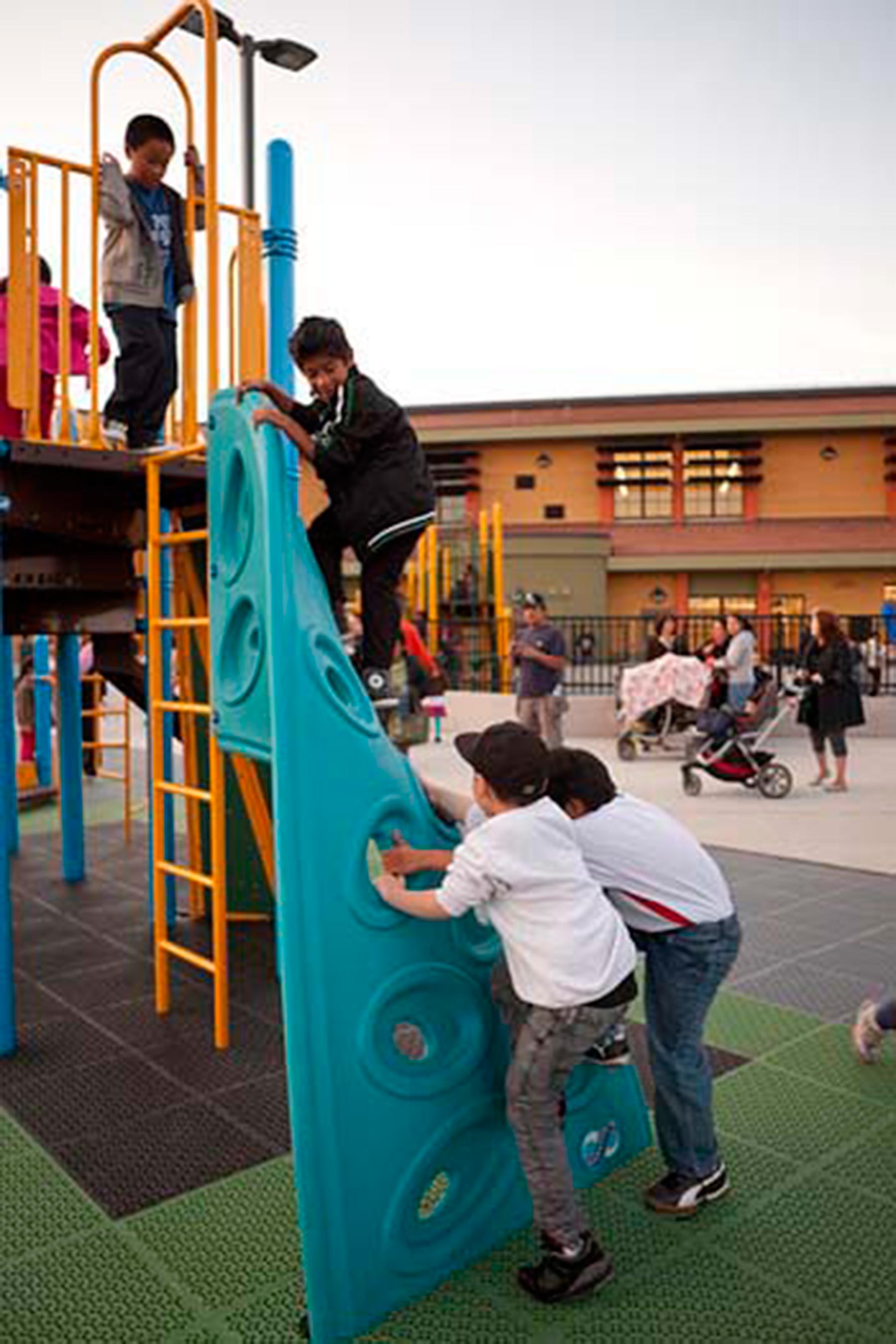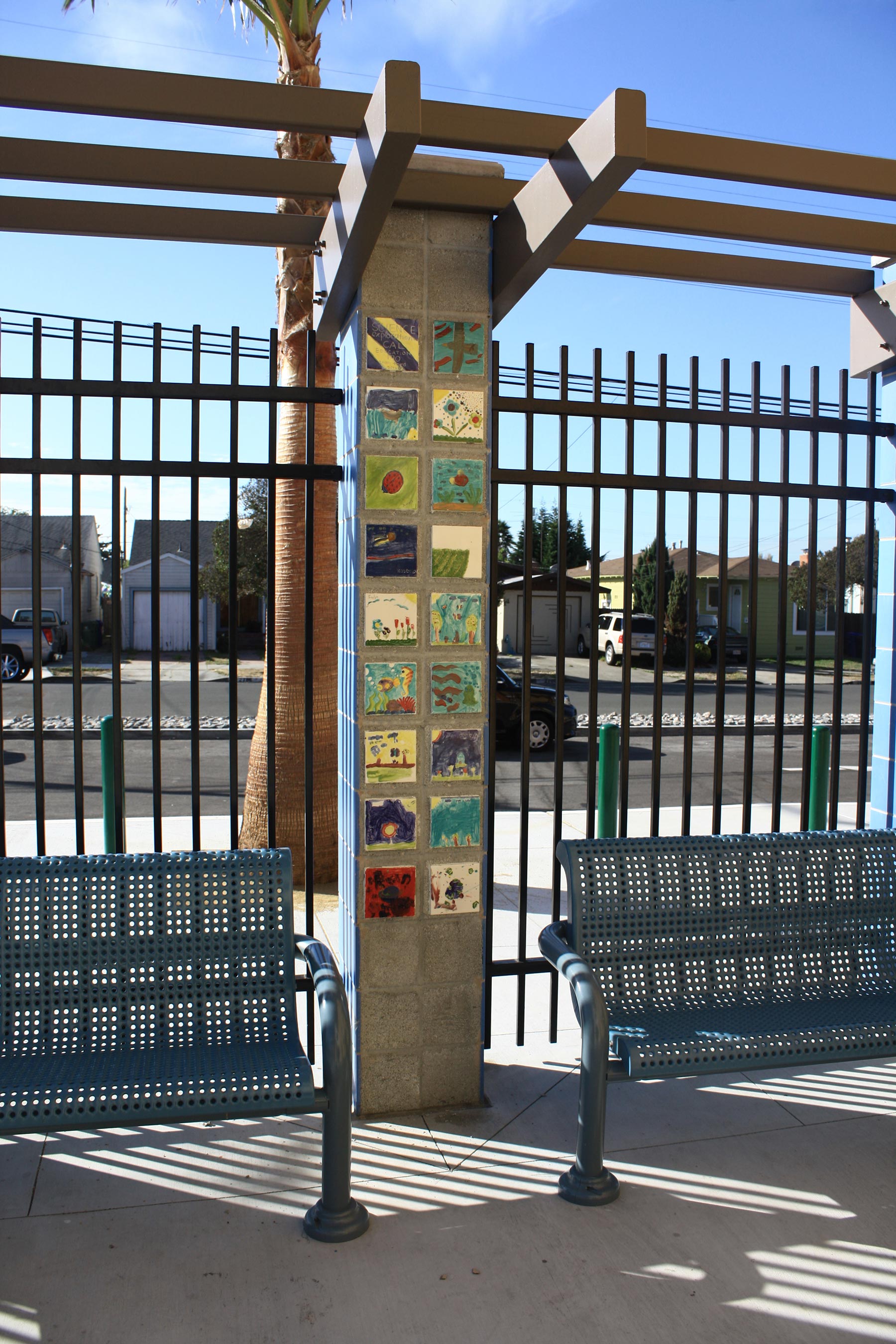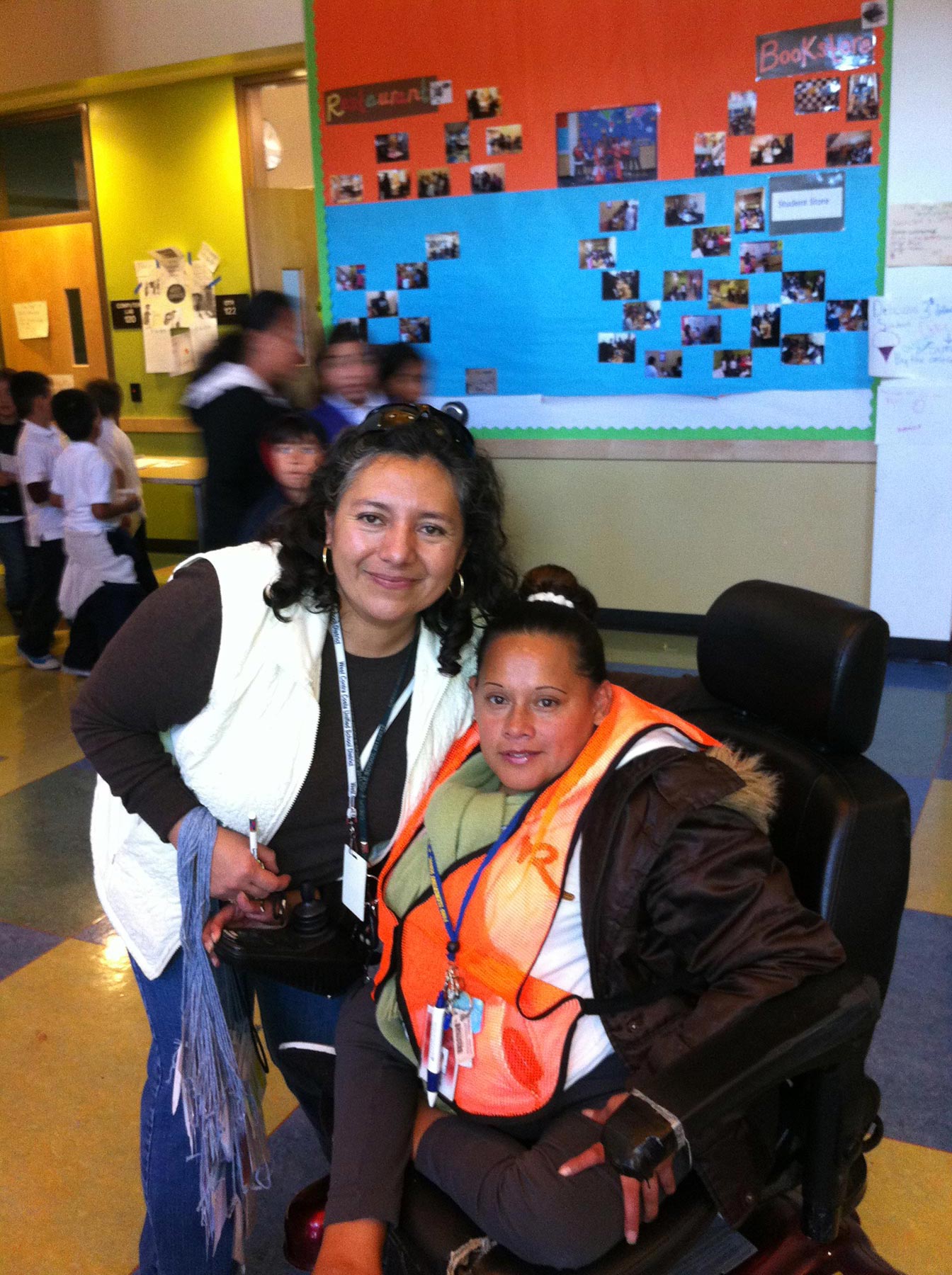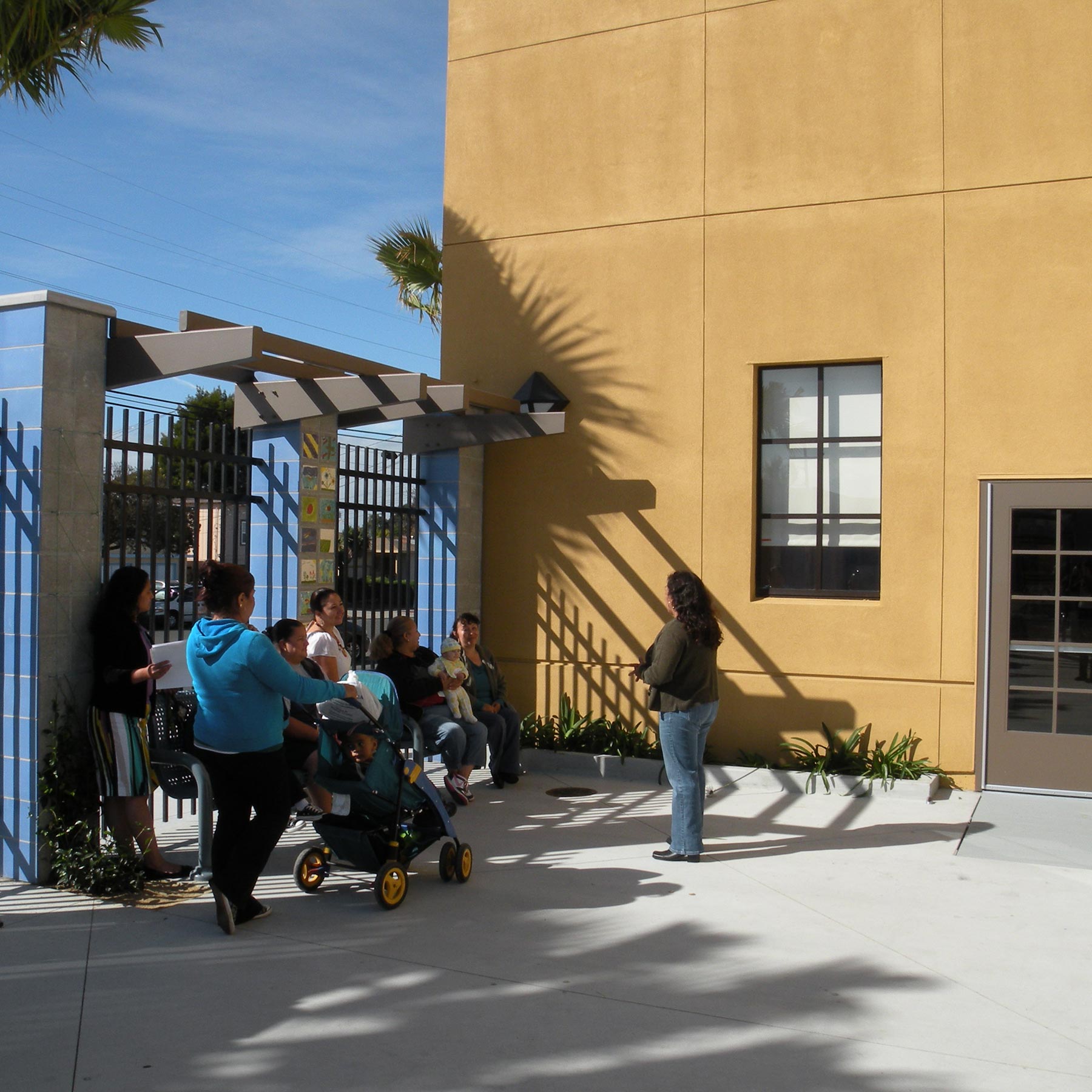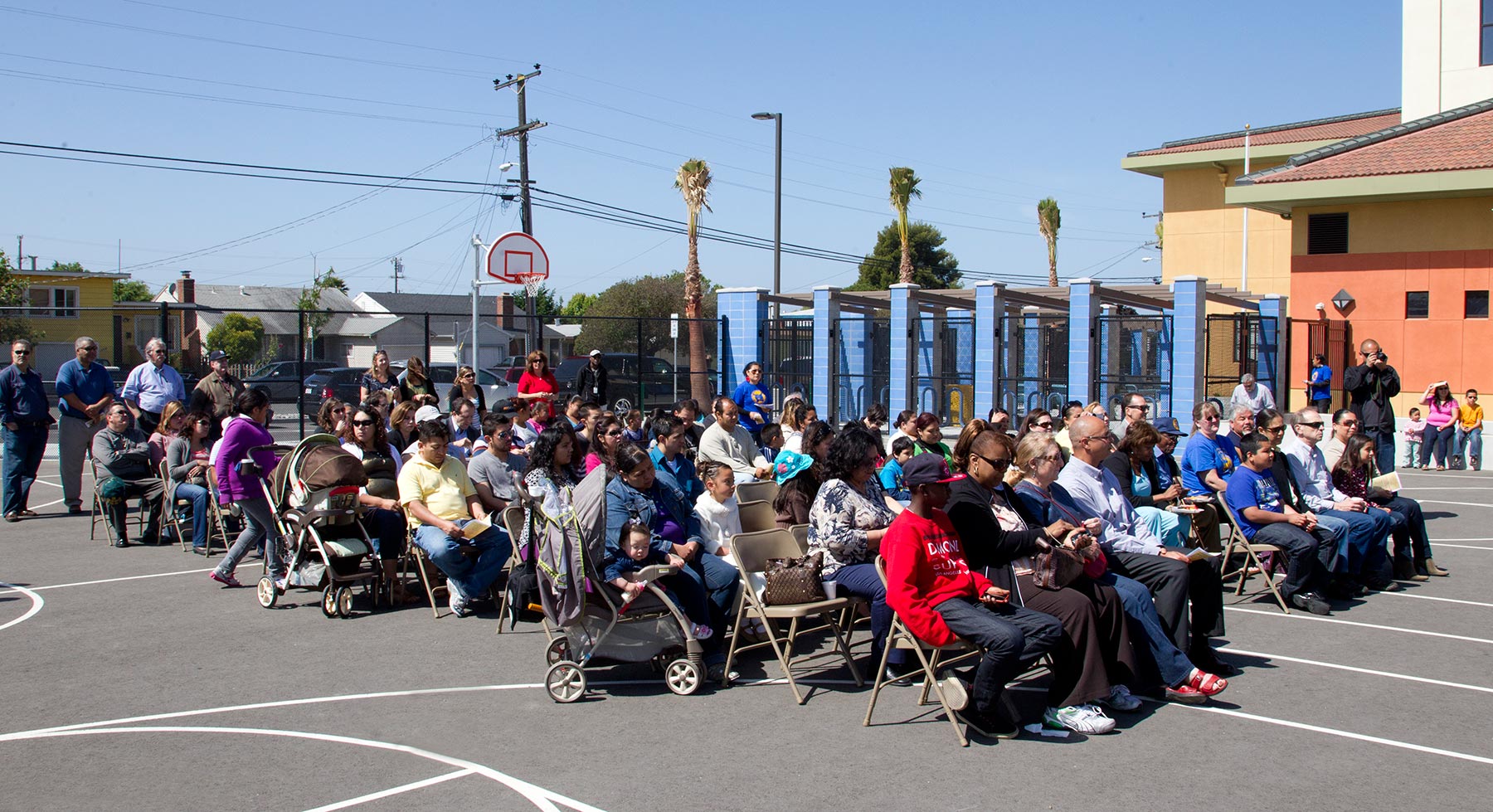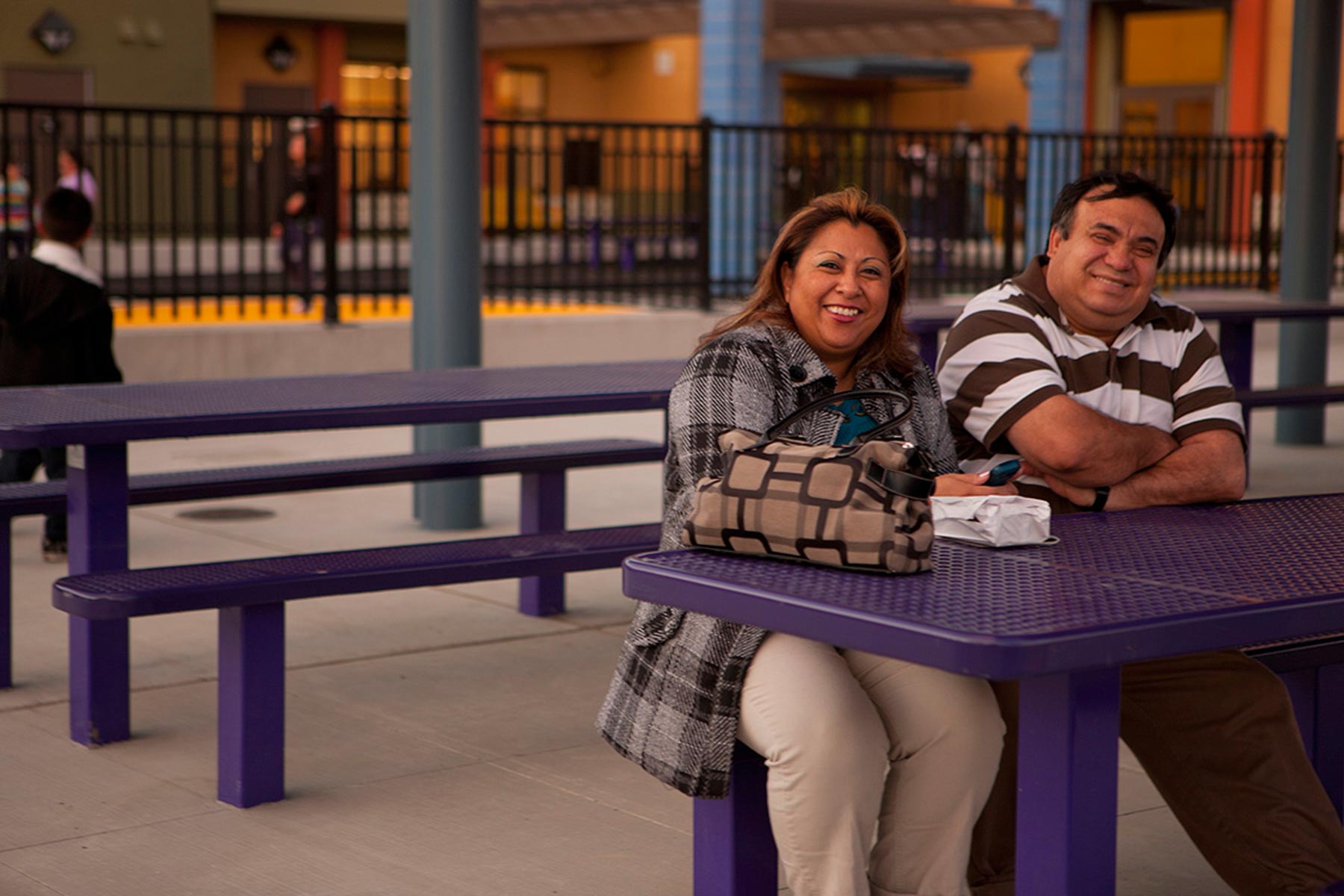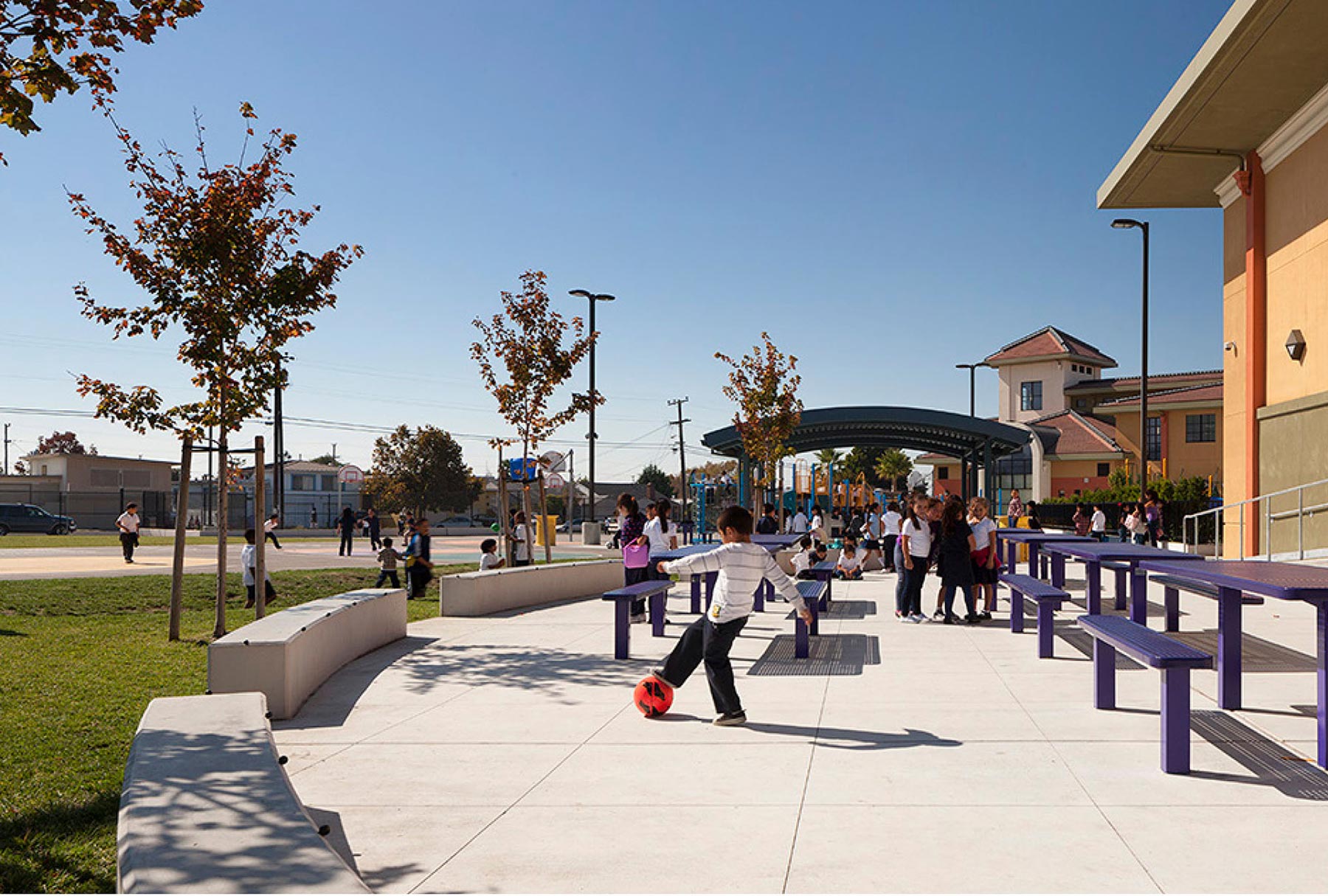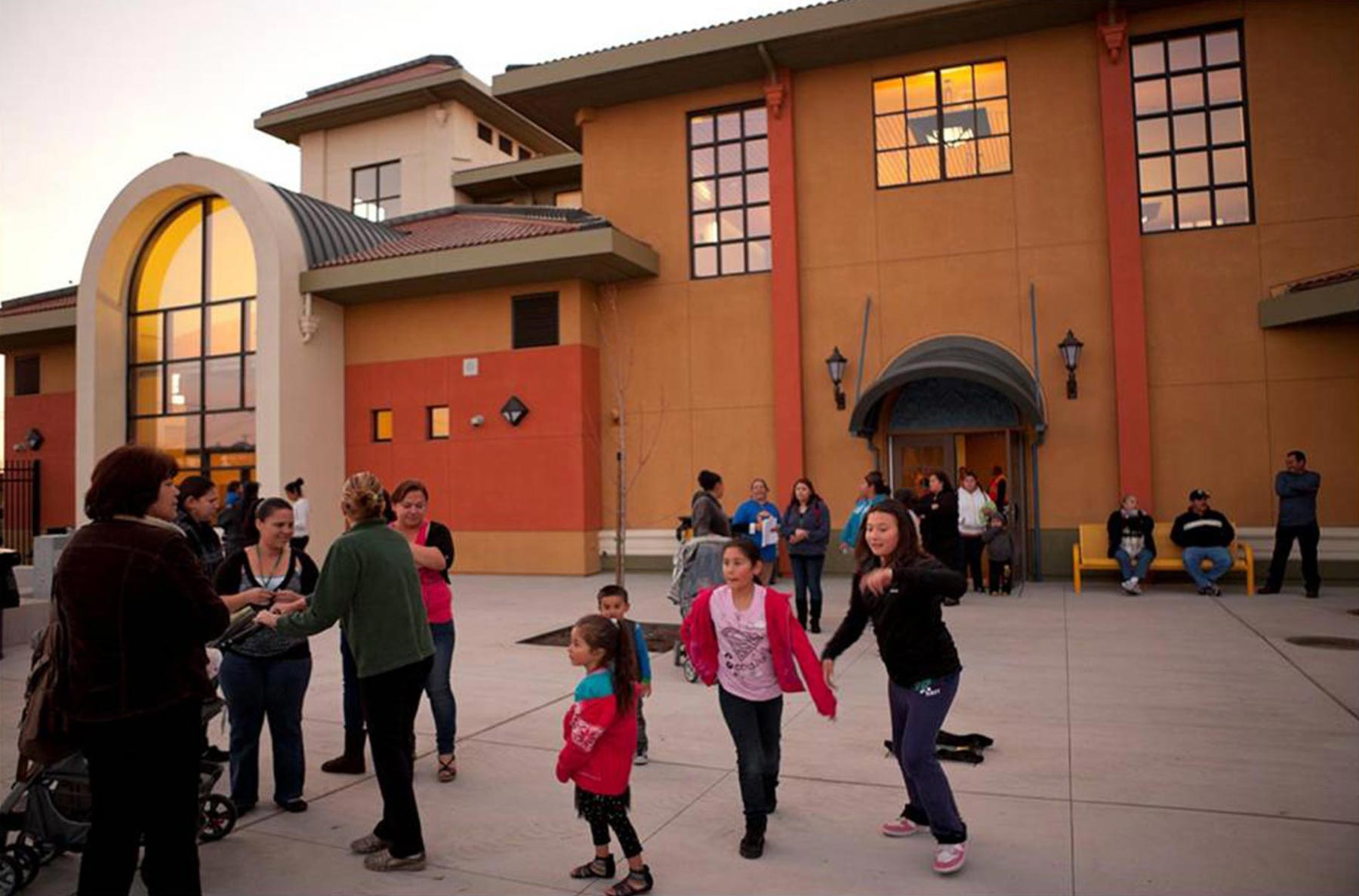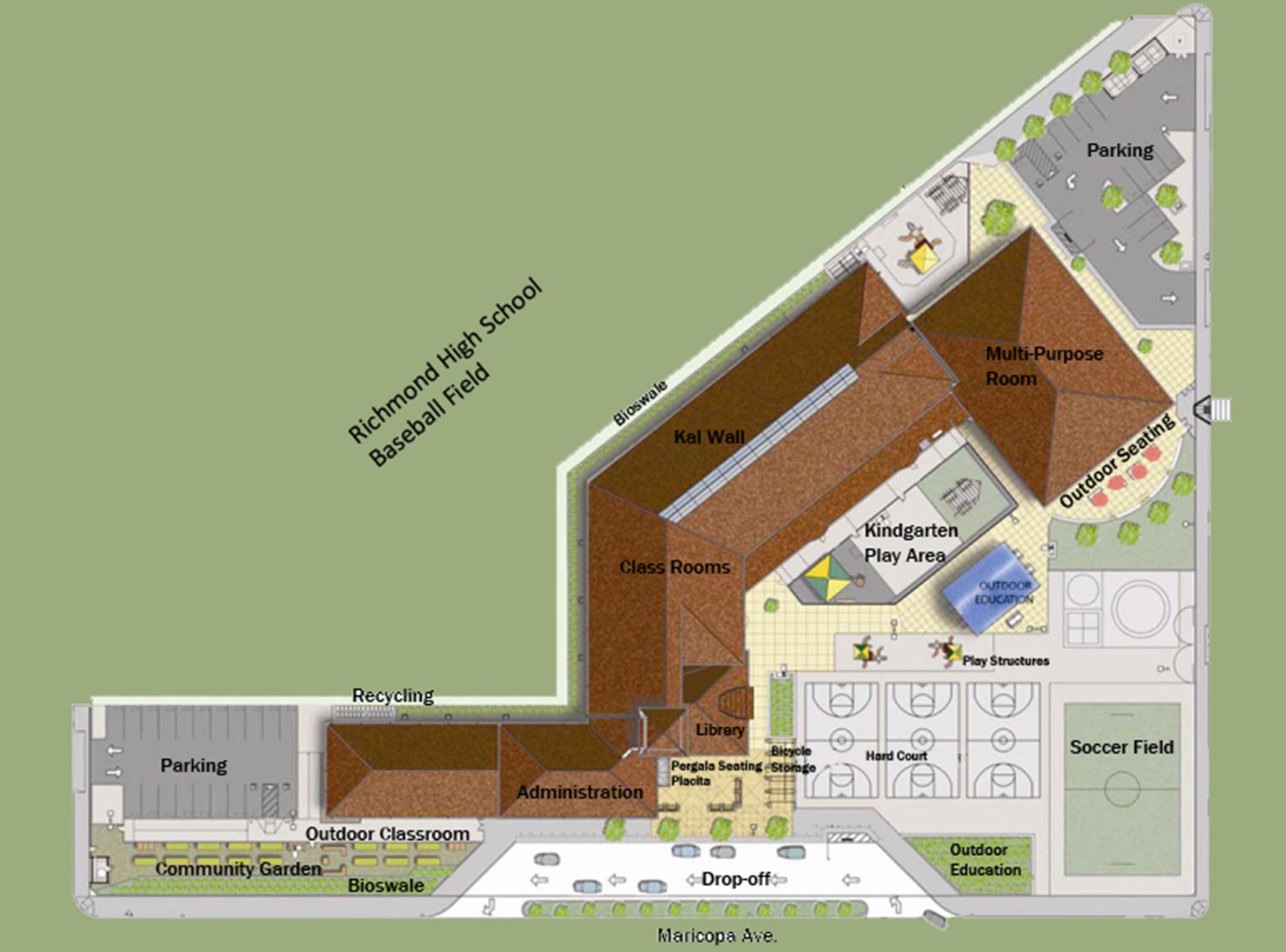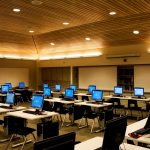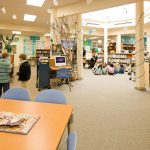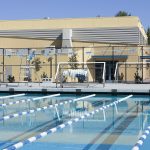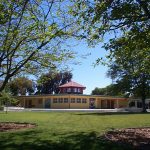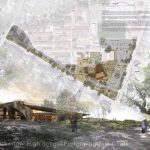Ford Elementary School
Richmond, CA
West Contra Costa Unified School District
Master Plan, New Construction, & Transition Campus – 2012
SSA designed a new $19 million energy-efficient school replacing the outdated original Ford Elementary School in Richmond.
Engaging students and collaborating with the entire community is at the heart of design for a 21st Century learning environment. Designed to address the whole child, both body and mind, Ford Elementary creates a strong learning environment from a child’s point of view. This is a project that truly reflects the needs of the community while at the same time creating classroom spaces that reflect the best possible learning environment. Our approach to planning was reflected in core values of collaboration and consensus building. As a result we identified the vision, goals, and programmatic needs necessary to meet the District’s project objectives. The objectives that came forth from community engagement included that the school be a channel for a safer neighborhood; have a low impact on the built environment; contain a vibrant outdoor space that the community could share to offset the dearth of neighborhood open space, as well as project a school image that was representative of the cultural identity of the community. Resulting from this comprehensive process was a Master Plan that recognized the immediate, mid-term and long-range programmatic requirements of the service area and spoke to the community’s most pressing needs. The collaborative approach provided a strong foundation for decision-making and ultimately served to effectively construct the project.
Ford’s design is a modern interpretation of the Mission Style. The school’s framework, a repeating 30-foot grid, creates the flexibility for educational programming in the interior, and easily accommodates a variety of alternative teaching methodologies. The light-filled corridors, with articulated beams, double as a collaborative in-between area where learning can also take place. The second floor corridor, for example, is transformed into a street for the innovative learning required in the ‘MicroSociety’ educational program enabling students to recreate their own ‘society’ by becoming sellers of goods, electing officials and reducing crime. This enhanced learning opportunity optimizes career educational training at the middle and high school levels.
To meet security and safety objectives the following 21st Century technology and classroom upgrades were incorporated into the design: A two-pronged security system includes both closed-circuit TV surveillance using 70 cameras and a card reader that allows different levels of access at different times of day and evening. Doors can be automatically released or locked to allow for after-hours use of spaces without participants being able to access the rest of the school. New phone systems were specified including up-to-date technology, data and wireless communication. In addition, Ford Elementary was wired to receive over 100 channels with a bio-directional system that allows production and screening of school programming on five channels.
At Ford Elementary, materials are green and non-toxic and the classroom design maximizes fresh air; when needed there is displaced ventilation, which is quiet and clean as sound reduction was an important criteria. Insulation made from recycled blue jeans was incorporated into all the walls, helping to maintain an even temperature in the building throughout the day, improve classroom heating capabilities, and further reduce sound transmission. The outdoor environment was carefully laid out to maximize both security and play areas, and the plantings contribute to the outdoor curriculum. All class levels include active outdoor spaces as well as smaller, quieter and covered space to just sit and talk or rest. Native plants add greenery without increasing water consumption. Bioswales, landscaped trenches like small canals placed around the campus, are planted with native grasses that have deep root systems to filter carbon, gas and oil from storm water; the runoff from roofs and the parking lot are purified of toxins before reaching the sewer. The Bioswales and the ecologically planted garden are also educational components to demonstrate sustainability in action.
Ford Elementary received one of the highest sustainable (HPI) points in the State of California’s High Performance Incentive program from the Collaborative for High Performance Schools (CHPS) for multiple energy-efficient systems.
The project is registered with CHPS, incorporates technology from LEED and is verified by DSA.
SSA also designed a “transitional campus” for Ford’s students, using DSA pre-checked portable buildings for the two-year period during which the old school was demolished and the new school constructed.
For more information on Ford:
School Construction News Article »
Office of Public School Construction »
MicroSociety News »
Sustainability at Ford »
Expertise
Access Consulting
Architectural Design and Planning

